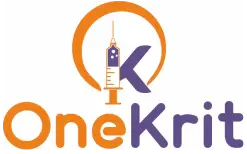Subtotal $0.00
Time is the most important consideration in the high-stakes world of emergency care. Medical teams must respond quickly and precisely since a patient’s life might be altered in a matter of seconds. Critical care medication, drugs created especially to stabilize patients, control life-threatening diseases, and give a window for additional treatment is one of their most effective weapons. Every day, these drugs help save many lives in emergency rooms, trauma centers, and intensive care units (ICUs) across the world.
Why Critical Care Medication is Essential?
Severe trauma, cardiac arrest, respiratory distress, infections, or unexpected strokes are examples of emergencies that frequently occur without warning. The body’s natural processes can’t handle these situations; thus, quick action is needed. Critical care drugs are designed to act fast and efficiently in these circumstances. They can help crucial organ function, control heart rhythm, manage excruciating pain, stop clots from forming, and restore blood pressure.
Critical care medications are intended for quick, acute treatments, as opposed to drugs used for common medical conditions. Due to their quick-acting properties, physicians can stabilize patients within the “golden hour,” a critical period immediately following a life-threatening event, when prompt intervention significantly increases the chances of survival and recovery.
Categories of Critical Care Medications
Critical care uses a broad range of drugs, each of which treats a distinct medical emergency:
- Cardiovascular Drugs: During shock or cardiac dysfunction, vasopressors, inotropes, and antiarrhythmic medications assist the heart, maintain circulation, and control heartbeat.
- Respiratory medications: Emergency oxygen treatment, corticosteroids, and bronchodilators are used to treat respiratory failure, severe asthma episodes, and flare-ups of chronic obstructive pulmonary disease (COPD).
- Pain Management and Sedation: Patients undergoing invasive surgeries or mechanical ventilation have less pain, anxiety, and agitation while using analgesics and sedatives.
- Infection Control: When treating sepsis, pneumonia, and other serious infections, broad-spectrum antibiotics and antivirals are essential.
- Blood and Fluid Regulation: Thrombolytics aid in the dissolution of harmful clots, while anticoagulants guard against clotting issues. IV fluids and electrolyte solutions preserve organ function and replenish lost hydration.
Every category contributes to patient stabilization, and frequently, many medications must be taken together under close monitoring.
Accuracy and Security in Management
Even while these drugs can save lives, improper usage of them might have negative effects. About their strength, precise dosage, and careful observation are required. For instance, a vasopressor taken in excess might dangerously increase blood pressure, whereas one taken insufficiently may not be able to stabilize the patient. In a similar vein, sedatives can reduce discomfort but, if not used carefully, can also slow breathing.
For this reason, emergency and intensive care unit personnel receive specific training on how to manage these medications. Healthcare personnel can make quick adjustments since advanced monitoring technology tracks patient responses in real-time. By further lowering the possibility of mistakes, protocols and checklists guarantee that critical care medicine serves its intended goal in a safe manner.
Innovations in Critical Care Medication
Emergency and critical care medicine is a fast-changing discipline. Among the most recent advancements are:
- Smart Infusion Pumps: By administering accurate dosages, these gadgets lower the possibility of pharmaceutical mistakes.
- Rapid-Acting Formulations: New medicine formulations enable quicker absorption and quicker outcomes.
- AI-Assisted Monitoring: To anticipate problems and direct prompt medication modifications, artificial intelligence is being incorporated into intensive care unit systems.
- Targeted Therapies: By focusing on damaged cells or organs, biotechnology is assisting in the development of drugs that lessen the needless stress on healthy systems.
These developments are helping patients recover and live better lives after exiting critical care, in addition to increasing survival rates.
Emergency and critical care drugs are more than simply prescription drugs; they are lifesavers. These medications intervene to stabilize essential functions, restore equilibrium, and buy valuable time for additional therapy when the body is about to collapse. However, prompt administration, accuracy, and the knowledge of medical specialists are necessary for their efficacy.
Critical care drugs are becoming increasingly complex, secure, and sensitive to patient demands as medical knowledge develops. They will continue to be at the core of emergency care, making sure that patients have the best chance of surviving and recovering even in extreme situations.

